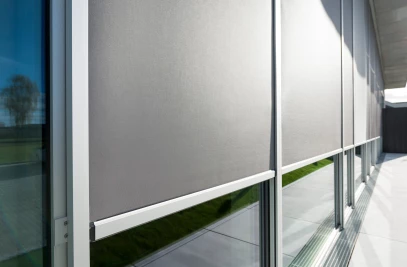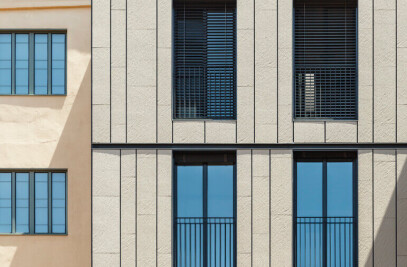Architects Betsaida Curto Reyes of Estudio Copla and Ander Bados Sesma of Atelier Ander Bados have collaborated on the design of a kindergarten in Villacurí in the heart of the Peruvian desert. The project is part of an initiative for All Hands and Hearts, a non-profit international disaster relief organization. The area’s school had not been rebuilt since Peru’s 2007 earthquake. Today, the school is an acclaimed example of educational architecture and a showcase for the use of traditional materials, building techniques, and sustainability.
Located in Peru’s Ica region, Villacurí is described as a human settlement that came about as the result of an influx of people to the area from the mountains and jungle that began 25 years ago. A place with temporary housing and no urban planning, its inhabitants work mainly for nearby agro-export companies. Betsaida Curto Reyes and Ander Bados Sesma explain that one of the main problems faced by this community is the “sparse attention” from the regional government. “The initial school was never rebuilt after the 2007 earthquake, which is why its 300 students spent years in prefabricated classes, where ventilation and health conditions made learning extremely difficult,” say the architects. In 2019, All Hands and Hearts made a decision to rebuild the school.
The temporary dwellings in Villacurí are constructed from a range of materials, including natural mats, concrete, brick, and wood — the various structures represent an amalgamation of different cultures and techniques in a somewhat haphazard manner. The approach adopted by the two architects to the kindergarten’s construction recognized Villacurí’s unique community and the importance it places on understanding the value of its surroundings.
“The common denominator among all of the buildings is the use of materials without coating — this is primarily for economy,” say the architects. “We therefore decided to adopt this as a concept, simply leaving the materials as they are.” This particular method of construction reduced the costs of the project without impacting the value of the school. The combined use of exposed brick and concrete, mats, cane brava (sugarcane), and wood has helped create an especially inviting school environment. Moreover, it lends credence to the importance and value of local building techniques, textures, and materials. “Our personal investigation for new uses for traditional materials was a process of mutual learning through shared knowledge,” say Curto Reyes and Bados Sesma.
The kindergarten’s plot is situated in the heart of Villacurí, overshadowed by neighboring buildings. The architects therefore designed a place where classrooms connect with open areas — “we devised a grid system filled with ‘full’ and ‘empty spaces’.” School buildings are divided by open plots: there are seven classrooms, a kitchen, staff rooms, and bathrooms. Children have access to shaded areas and paths amongst the wild cane and olive trees — the shade along with cross ventilation also helps to protect classrooms from the hot desert sun; an amphitheater serves as a playground and a community hub.
In an effort to further reduce classroom temperatures, Curto Reyes and Bados Sesma reinterpreted an old Ica method: “We used a double-roof system that forms an air chamber, thus allowing natural air ventilation to flow throughout the school while enhancing environmental comfort.” A continuous plane of cane brava placed beneath a concrete slab creates the air chamber. The cane brava extends beyond the roof to provide additional shade.
The temporary nature of Villacurí, where people typically reside during the agricultural seasons, means that families are less likely to enroll their children in schools if they deem the facilities and quality of education to be substandard. “The construction of this new school, with good spaces for teaching, pleasant temperatures, and outdoor areas with local plants, has created a positive impact on children's schooling,” say Curto Reyes and Bados Sesma. “Enrollment has increased by more than 20 percent compared to previous years.” The new school is recognized as a model example of educational architecture — making use of local materials and sustainable interventions — with visits from regional government representatives.
The architects explain that “the ‘borrowed’ construction techniques used, along with the repurposing of local materials, allowed us to reimagine what most deem ugly as beautiful.” Materials such as cane and wood were often dismissed as inferior and a reminder of the first stages of settlement in Villacurí. The school’s success has helped to counter this, fostering a greater sense of community belonging and pride. “‘Poor materials’ are once again celebrated and used, which also supports the area's circular economy,” say Curto Reyes and Bados Sesma.



































































